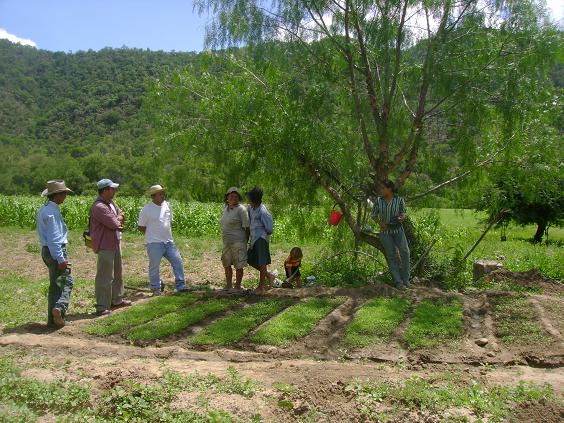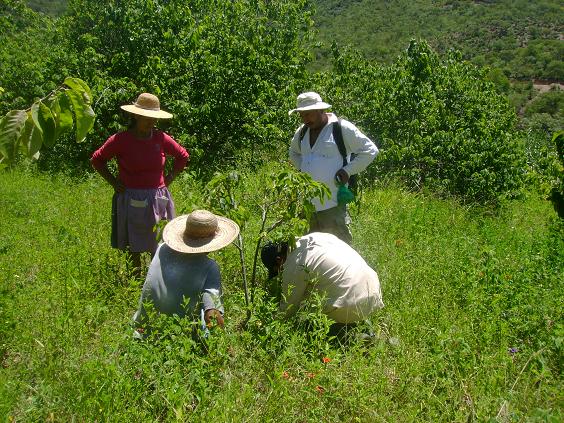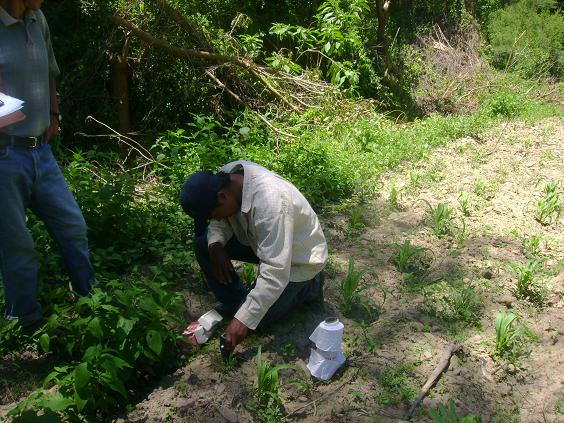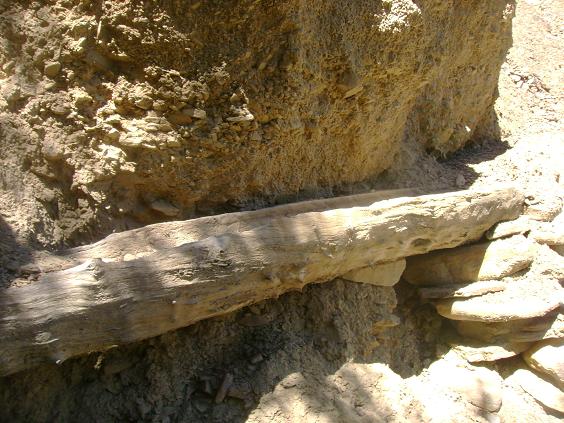CBA Bolivia: Sustainable Management of the Cherimoya Crop for Climate Change Adaptation in Saipina (FAN)
Project Overview
Saipina is located in Bolivia’s “warm valleys”, an area of transition between the western high plains and the eastern lowlands. The area’s poor families rely on their crops for food and income. They are highly dependent on their environment, especially the local river. When rainfall levels are low, the river runs dry for several months. Although there is some irrigation, the methods used are rudimentary and inefficient. Local forests are also threatened. Their overuse for animal forage and wood fuel exacerbates deforestation and is leading to a progressive loss of woodland vegetation and productive soils. The combined problems of water scarcity, resource degradation, and cyclical change in rainfall patterns (linked to El Niño and La Niña) jeopardize food security.
This Community-Based Adaptation project will reduce the vulnerability of local agricultural production to climate change through an approach that combines environmental conservation, improved water management, and food security. Agroforestry techniques will be introduced to improve resource management and maximize scarce water resources. These efforts will focus primarily on the improved cultivation of cherimoya, a native fruit crop.
* This project is part of Bolivia's Community-Based Adaptation portfolio. *
Project Details
This project focuses on the communities of Oconi and Pie de la Cuesta, in the Saipina Municipality, Santa Cruz Department, Bolivia. Saipina is located in Bolivia’s “warm valleys” – an area of transition between the western high plains and the eastern lowlands. The local community is primarily agricultural, growing potatoes, tomatoes, onions, leafy vegetables, and the native cherimoya fruit. In recent years, cherimoya cultivation has grown more important.
The project area experiences a distinct rainy and dry season, with one sowing season in the wet season and one sowing season dependent on river-water irrigation in the dry season. Baseline environmental challenges include deforestation and soil degradation, driven by the continuing advance of the agricultural frontier. In addition, climatic changes are already becoming apparent in this part of Bolivia. Projections from climate change scenarios for Bolivia include increasing temperatures, increasingly intense yet erratic rainfall, and more marked seasonality – in turn increasing risks of both floods and droughts. These pressures have the potential to seriously worsen baseline land degradation pressures. And as land degradation pressures increase, the need for farmers to farm new lands could increase – creating a clime-driven cycle of degradation leading to deforestation and further degradation. Changing hydrology also threatens the improved incomes attained through increased cherimoya cultivation. As climate change alters local biophysical and ecological dynamics, altered management strategies are needed to maintain land resources and rural agricultural incomes.
This Community-Based Adaptation (CBA) project will compliment baseline cherimoya management activities by designing community-driven climate-resilient agroforestry systems. These systems will take into account changing hydrological dynamics and managing land and water resources with the goal of sustainability in the face of climate change. Lessons learned from project implementation will also be leveraged to inform policies for managing local rivers.
Key Results and Outputs
Outcome 1: Make cherimoya production systems more resilient through implementation of agroforestry systems
Complete biophysical and socio-economic studies for design and implementation of improved orchard systems (Output 1.1). Establish/improve cherimoya plots using appropriate soil conservation practices and soil management (such as terrace, contour planting, agroforestry, etc.) (Output 1.2) and appropriate irrigation systems (more efficient and adapted to changing water availability (Output 1.3).
Outcome 2: Capacity developed to manage water and soil in a climate-resilient manner
Bring communities an understanding of climate change adaptation measures (Output 2.1) and capacity to implement improved cherimoya/agroforestry systems through meetings, trainings, and knowledge exchanges (Output 2.2).
Outcome 3: Climate risk management integrated into local policy frameworks
Adopt ordinances in the Saipina municipality that promote the sustainable management of water in Oconi and Pie de la Cuesta rivers (Output 3.1).
Reports and Publications
PIFs
Assessments and Background Documents
Bolivia Second National Communication, 2009 (English)
Bolivia Second National Communication, 2009 (Spanish)
Monitoring and Evaluation
Monitoring and evaluation for community-based adaptation is a new field, and the CBA project is piloting innovative approaches to evaluating the success of locally-driven adaptation projects, and generating lessons to inform ongoing practice.
Key considerations in M&E for CBA include:
- Grounding M&E in the local context: M&E for CBA should avoid overly rigid frameworks, recognizing community heterogeneity and maintaining local relevance
- Capturing global lessons from local projects: CBA projects are highly contextualized, but lessons generated should be relevant to stakeholders globally
- Incorporation of both quantitative and qualitative indicators: to ground projects in tangible changes that can be objectively evaluated, and to capture lessons and case studies for global dissemination
To these ends, the CBA project uses three indicator systems: the Vulnerability Reduction Assessment, the Small Grants Programme Impact Assessment System, and the UNDP Climate Change Adaptation Indicator Framework.
The Vulnerability Reduction Assessment (VRA)
The VRA is a question-based approach with the following aims:
- To make M&E responsive to community priorities
- To use M&E to make projects more accountable to local priorities
- To make M&E capture community ideas and local knowledge
- To gather community-level feedback to guide ongoing project management
- To generate qualitative information
- To capture lessons on specific issues within community-based adaptation
- To generate case studies highlighting adaptation projects
The VRA follows UNDP's Adaptation Policy Framework, and is measured in a series of meetings with local community stakeholders. In these meetings, locally-tailored questions based on standard VRA questions/indicators are posed, and the community assigns a numerical score on a 1-10 scale for each question. Progress is evaluated through changes in scores over the course of implementation, as well as through qualitative data collected in community discussions surrounding the exercise.
UNDP has developed a Users Guide to the VRA (Espanol) (Francais) as a tool to assist practitioners to conceptualize and execute VRA measurements in the context of CBA projects.
The SGP Impact Assessment System (IAS)
The CBA, being a project of the GEF Strategic Priority on Adaptation, aims to increase the resilience of ecosystems and communities to the impacts of climate change, generating global environmental benefits, and increasing their resilience in the face of climate change impacts. To this end, the CBA projects use the SGP's impact assessment system for monitoring achievements in GEF focal areas (focusing primarily on biodiversity and sustainable land management).
The IAS is composed of a number of quantitative indicators which track biophysical ecosystem indicators, as well as policy impact, capacity development and awareness-building.
UNDP Climate Change Adaptation Indicator Framework
CBA projects also track quantitative indicators from UNDP's adaptation indicator framework, corresponding to the thematic area on natural resources management. More information on UNDP's indicator framework can be found on the UNDP climate change adaptation monitoring and evaluation website.
* This description applies to all projects implemented through UNDP's Community-Based Adaptation programme. Specific details on this project's M&E will be included here as they become available. *








